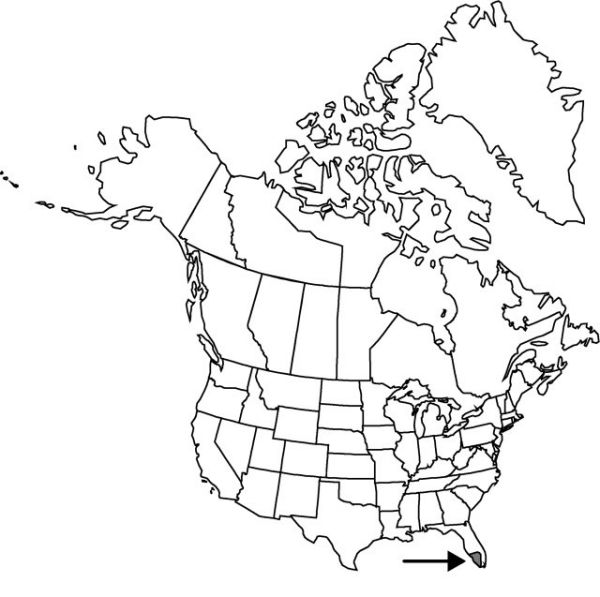Dendrophylax lindenii
Gard. Chron., ser. 3, 4: 533. 1888.
Plants appressed to substrate, seemingly leafless. Roots gray-green, fascicled, to 50 cm × 3–5 mm. Stems inconspicuous, obscured by roots. Leaves bractlike, inconspicuous, often absent. Inflorescences: peduncles arcuate-ascending, 6–25 cm; bracts tubular, sheathing, 5–7 mm; racemes 1–10-flowered; floral bracts lanceolate, 4 × 3 mm, scarious. Flowers opening in succession, usually 1–2 at a time, nocturnally fragrant; sepals and petals spreading, white to creamy green or pale yellow-brown; dorsal sepal lanceolate to elliptic-lanceolate, 20–21 × 5–6 mm, apex acute; lateral sepals slightly oblique, lanceolate to narrowly lanceolate, 25–30 × 4–5.5 mm, apex obtuse to acute; petals falcate-recurved, narrowly lanceolate, 22–27 × 4–4.5 mm, apex acute to acuminate; lip white, basally concave, 3-lobed, middle lobe with subquadrangular isthmus, terminating in 2 arching, twisting, caudate lobes 45–70 mm, apiculate, lateral lobes spreading, 18–25 mm wide when spread, apex obtuse to acute; callus with narrow, denticulate keel; spur arcuate, slender, 11–17 cm; column stout, with 2 triangular wings projecting toward lip, 2–3 × 5 mm diam.; pollinia orange; pedicellate ovary slender, 30 × 1.5 mm. Capsules 6–10 × 0.5 cm.
Phenology: Flowering May–Aug, occasionally as early as Feb.
Habitat: Epiphytic in cypress swamps, wet hammocks
Elevation: 0–20 m
Distribution

Fla., West Indies.
Discussion
Selected References
None.
